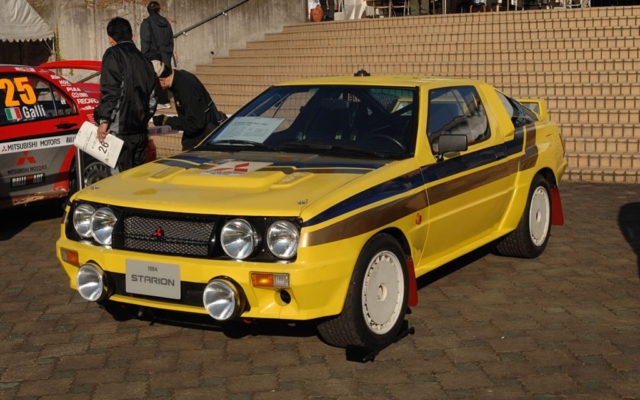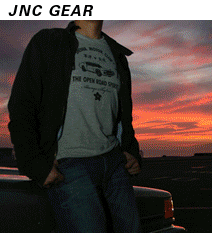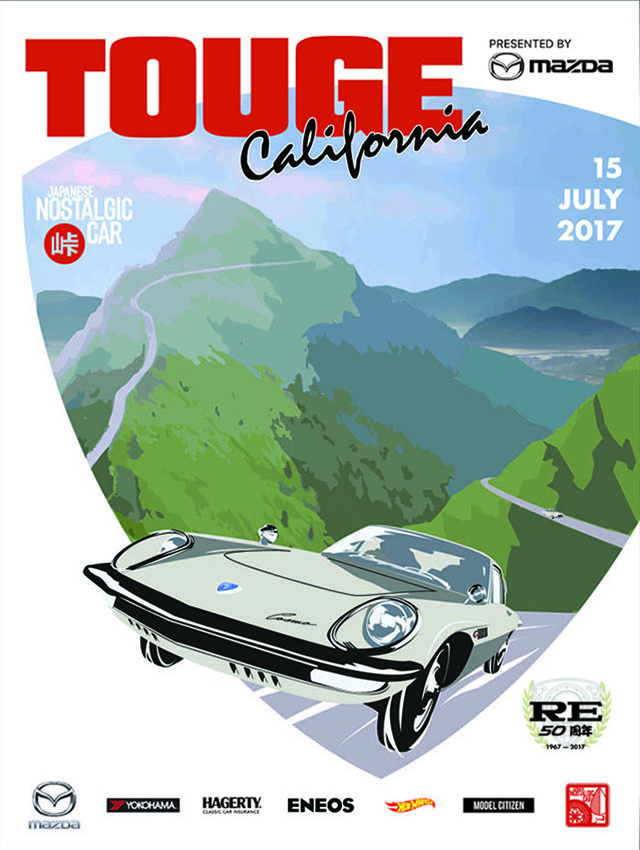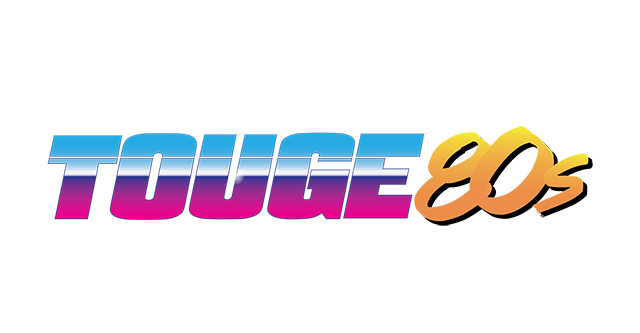This past Monday’s QotW explored “What JNC concept deserves to be found or restored?” Coincidentally, a never-before-seen Mitsubishi Starion 4WD Group B road car has just been unearthed, albeit in an illustrated and archival form. If it were put into production, it would have been one of the greatest Mitsubishis ever made.
Recently, the UK’s AutoExpress received some previously unseen images of a Mitsubishi Starion Group B road car from the now-defunct Mitsubishi UK‘s importer. The images hail from an “internal correspondence” in 1984, and the plan was to homologate a Starion-based rally car from the WRC’s most idealized era.
Legendary, fire-spitting Group B rally machines such as the Audi Quattro and Ford RS200 ripping through dirt and tarmac are seared into the brains of many an 80’s child. It was an all wheel drive space race, and Mitsubishi wanted to enter its Starion rocket.
The reins of the special project was given to former driver Andrew Cowan, the founder of Ralliart UK. A four-wheel drive system needed to be developed for Mitsubishi’s rising star, and Alan Wilkinson of Audi Quattro fame decided to join forces with Cowan. Insider knowledge of the Quattro’s Achilles heel trickled into Ralliart by way of Wilkinson — the engine placement. The massive inline-five was positioned too far forward of the front axle, causing the German machine to suffer from terminal understeer.
To avoid the Starion prototype from having the same flaw, a strengthened transfer case from the company’s Pajero was positioned behind the transmission, with a prop shaft stemming to drive the front wheels. The clever packaging allowed the 350-horsepower engine to be mounted front-midship, behind the front axle, improving weight bias and handling.
Also moved further back was the nose, which was chopped to affix more easily serviceable and lighter fixed quad round headlights. The rhinoplasty resulted in a front overhang reduction of six inches, allowing the mounting of a larger radiator for better cooling. More weight shedding was done on the body, with carbon fiber and Kevlar panels dropping the weight to a feathery 1,050 kg (2,320 pounds).
One Starion Group B prototype was entered into the 1984 Rallye Milles Pistes, where it would finish sixth overall and win the Prototype class. Despite a strong finish, development delays mixed with management’s second thoughts slowly incapacitated the project.
The Starion 4WD prototypes were tested in a few other events, but as Group B evolved and became populated by bespoke, tube frame chassis, rear mid-engined machines, the Starion grew increasingly obsolete. Although it was expected to pass homologation in 1986, Group B was cancelled that same year, taking the prototypes and proposed homologation road cars along with it.
Here's the kind of story that lands in my inbox at 4pm on a Friday afternoon before a Bank Holiday weekend. No, seriously, if you like #WRC or @MitsubishiUK, you might find it worth a read. #Starion #GroupB https://t.co/D2P29KQmBD
— John McIlroy (@johnmcilroy) May 28, 2021
That means that, sadly, the 200 homologation road cars, required by the WRC to enter Group B, died along with it. The images obtained by AutoExpress (which you can see here) show a car not too far off from the Starion 4WD prototype. Most noticeably, it ditches the Starion nose we know and love for the shortened nose, fixed quad headlights exposed.
Upon closer inspection it shows a more refined version of the yellow car’s front fascia as well. Three stacked horizontal openings below each signal replace the a single round holes. The high beams are a bit smaller, and the driving lights are gone (but possibly would have been available as an option). Its hood bulge shows more sculpting and the rocker skirts appear to kick out more. While the front fender flares are molded like the production Starion’s, the rears are separate units. A chunkier rear bumper and spoiler more upright than the production car’s (but not quite like the prototype’s pass-through wing) round out the rear.
According to AutoExpress, each Starion 4WD road car would have come with a serialized number plaque and the engine would have seen displacement increased to 2,140cc from the base 2.0-liter. It was also supposed to debut at the 1984 British Motor Show, which they point out aligns with its timing at the Mille Pistes Rally.
But alas, all-wheel-drive WRC dominance was a future not meant for Mitsubishi. That is, until the 90s. All of the 4WD scholarship earned from the Group B prototypes would go into Mitsubishi’s Group A challenger, the Galant VR-4, and eventually, the all-conquering Lancer Evolution.
In an alternate universe, though, the Starion Group B homologation specials would have brought Mitsubishi recognition in the west much earlier on, by perhaps a decade or so. Remember, at this time the company was only a couple of years past establishing their own dealers in the U.S., as opposed to being Dodge and Plymouth-badged captive imports.
Of course, WRC wasn’t popular in the States, but perhaps a few savvy enthusiasts could have figured out how to obtain one. In any case, they’d be legal for import now. The Starion we’re used to still looks far better to our eyes, but in this parallel dimension, these 200 Starion 4WDs could be even be more desirable than the 3000GT VR-4 today.










Uhh NO… Audi was developing a totally new Group B car before Group B was eliminated, and it wasn’t based on the Sport Quattro. Terminal understeer? Hardly. If that were the case, Audi wouldn’t have won races and changed rallying with their all wheel drive, which made rear wheel drive cars like the Lancia Stratos obsolete.
Yeah, Audis have their engines in front of the axle, but that didn’t stop them from winning SCCA and IMSA titles with their 200 and 90 SEDANS. Terminal understeer, my ASS.
Too bad you have no idea what to say …. quattro never fought Lancia Stratos but 037 …. and lost! Walter Rohrl said a lot about that “terminal understeer” … but I guess you have no idea what this guy is. …. otherwise another example of how the internet gives voice to all suckers ….
“Terminal understeer? Hardly.”
Understeer was the reason for shortening the Quattro to make the Sport Quattro in ’84. Which then made it unstable and difficult to handle.
Like, you can be a fan of something and still acknowledge that it has faults.
I think everyone can acknowledge that Audi’s efforts with the quattro heralded in the era of 4wd rally cars that we have today, and their successes in the early 80’s can’t be denied, but they certainly had their challenges, and in the end only won 2 RWC manufacturers titles.
The ONLY reason Audi ever won rallies was because they were the first primarily to employ 4wd. When the others did the same with better/lighter cars, Audi never really won again. The Quattro was competitive against 2wd cars only. It even lost against a Lancia 037 which was car designed for tracks, not rallies. The Quattro system is still employed today in some Audi road cars, and they are all nose heavy.
Yeah right, terminal understeer, shmerminal shmnundersteer. Why, in the name of physics, would a FWD-based car with three feet of front overhang 90% full of engine – to the extent that Audi were forced to place the rad to one side – not just whip around chicanes and hairpins with perfect neutrality? I mean it’s not like Audi were forced to massively cut the wheelbase and build an entirely new homologation model to stay competit… wait.
– BLUSTERY CAR BOY OUT
I also take issue with the original post’s statement “all-conquering Lancer Evolution.”
It only won 1 WRC manufacturers championship.